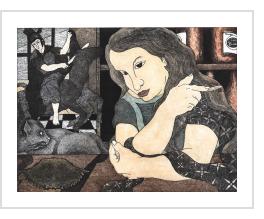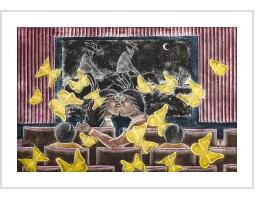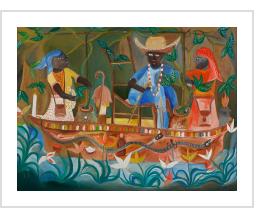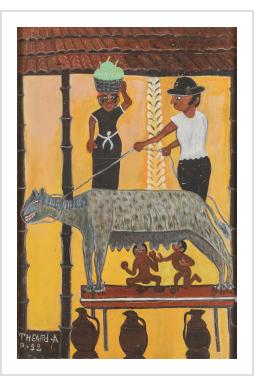"The Story Scrolls of Bengal" in Raw Vision magazine
by AFisher
The Story Scrolls of Bengal
Author: Shaheen Merali
Madhu and Hazra Chitrakar are artists based in the State of Bengal, East India. “Chitrakar” translates as “image maker”, and they are primarily self-taught – or, more precisely, taught within the lineage of family tradition, for their parents and grandparents would have also been Chitrakars and viewed as outsider artists. They are itinerant patua artists, whose pictoral stories are told with pigment on long scrolls. The stories traditionally revolve around common myths about gods, goddesses and epics that are re-told in different places, as they journey around the state. Either Hindu or Muslim, they occupy a marginalised status, forced to live on the outer fringes of their villages in rural Bengal. They are considered to be of the Hina by the upper-caste Hindus, which is a very lowly artists’ profession similar to the Muslim patnas. However, they are further reviled by orthodox Muslims for painting and singing in praise of Hindu gods, goddesses and mythology. Madhu, a Muslim with a Hindu name, is typical of this unusual social phenomenon.
The Chitrakars work in the traditional mode of wandering minstrels, a medieval tradition in which a singer from an artisanal family sings of events or myths with the accompaniment of a long, narrative scroll for the masses or performs in isolated villages. The full-sized scrolls are always accompanied by smaller works that portray singular figures from mythology, providing the opportunity to sell to the domestic, pedestrian market. The best-known drawings and paintings of nineteenth-century Bengal are the Kalighat Pats, created by village-based clay modellers and painters who settled in the vicinity of the famous Kali Temple of Kalighat in Kolkata. Increasingly, the Chitrakars’ work has been collected by their audience as well as other buyers and collectors who are beguiled by the singular humour, artistry and vibrancy.
On the reverse of the paper-painted patua scrolls, old and discarded pieces of cotton or silk saree fabric is attached. The hand-made texture of the paper, strengthened by the fabric backing and the use of vegetable pigments, allows the scrolls to be rolled up and transported [...].
Caption: Madhu and Hazra Chitrakar, 9/11 (detail), 2010, vegetable pigments on paper (with cloth backing), 44 x 300 ins. / 111.76 x 762 cm
Read the full article in:
Raw Vision #88 <http://rawvision.com/articles/story-scrolls-bengal>




